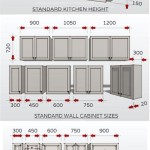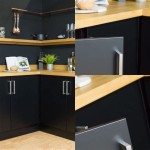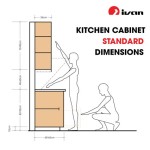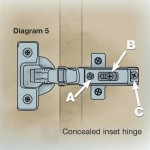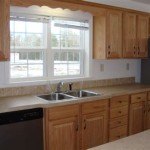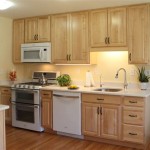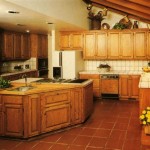How to Install Cabinet Hardware
Cabinet hardware, including knobs, pulls, and hinges, plays a significant role in both the functionality and aesthetics of your kitchen, bathroom, or any other space with cabinetry. Installing cabinet hardware is a relatively straightforward DIY project that can enhance the look of your cabinets and improve their usability. This guide provides a comprehensive overview of the steps involved in installing various types of cabinet hardware, ensuring a smooth and successful process.
Choosing the Right Hardware
Selecting the right hardware is crucial for achieving the desired aesthetic and functional outcome. Consider the following factors when making your choice:
-
Cabinet Style:
The style of your cabinets, whether traditional, modern, or contemporary, should dictate the hardware style. For instance, ornate knobs might work well for traditional cabinets, while sleek, minimalist pulls suit modern designs. -
Size and Shape:
The size and shape of the hardware should complement the size and shape of your cabinets. Consider the size of the drawer fronts and doors to ensure that the hardware is proportionate. -
Material:
Cabinet hardware is available in various materials, including metal, ceramic, glass, and wood. Consider the overall design theme of your kitchen or bathroom and choose a material that complements the existing fixtures. -
Finish:
Choosing the right finish is important to ensure a cohesive look with your existing appliances and fixtures. Popular finishes include brushed nickel, oil-rubbed bronze, polished chrome, and matte black.
Installing Cabinet Knobs and Pulls
Installing cabinet knobs and pulls involves a few simple steps:
-
Measure and Mark:
Determine the desired placement of the knobs and pulls on the cabinet doors and drawers. Use a measuring tape and pencil to mark the precise locations for drilling. -
Drill Pilot Holes:
Drill pilot holes at the marked locations using a drill bit slightly smaller than the diameter of the mounting screws. For larger knobs and pulls, you might need to use a countersinking bit to create a countersink for the screw heads to recess flush with the surface. -
Attach the Hardware:
Place the knob or pull over the pilot hole and secure it with the mounting screws. Ensure that the hardware is centered and that the screws are driven in straight. -
Check for Tightness:
After attaching the hardware, check that the knobs and pulls are securely mounted and do not wobble. If necessary, tighten the screws slightly.
Installing Cabinet Hinges
Installing cabinet hinges typically involves the following steps:
-
Prepare the Cabinet Door and Frame:
Remove any existing hinges from the cabinet door and frame. If necessary, clean the surfaces where the hinges will be mounted. -
Position the Hinge Plates:
Position the hinge plates on the cabinet door and frame, aligning them with the existing screw holes, if applicable. Ensure the hinge plates are level and parallel to each other. -
Install the Hinge Pins:
Insert the hinge pins into the hinge cups. If using self-closing hinges, ensure that the spring mechanism is correctly installed. -
Install the Hinge Screws:
Use a screwdriver or drill driver to secure the hinge plates to the cabinet door and frame. Avoid overtightening the screws to prevent damage to the wood. -
Align the Door:
After installing both hinges, open and close the cabinet door to ensure proper alignment and free movement. Adjust the hinge screws slightly if necessary to correct any alignment issues.
Troubleshooting and Tips
While installing cabinet hardware is generally straightforward, some common issues might arise. Here are some troubleshooting tips:
-
Uneven Hardware Placement:
If knobs or pulls are not aligned properly, double-check the measurements and ensure that the drill holes are in the correct locations. -
Stripped Screw Holes:
Avoid overtightening screws to prevent damaging the screw holes. If a hole becomes stripped, use a larger screw or a wood plug to repair the hole. -
Hinge Alignment Issues:
If the cabinet door misaligns, adjust the hinge screws slightly to correct the alignment. Use a level to ensure that the door is vertical and horizontal.
Here are a few additional tips to ensure a smooth and successful installation:
-
Use a Level:
Use a level to ensure that the knobs, pulls, and hinges are mounted level and aligned properly. -
Pre-drill Holes:
Always pre-drill pilot holes to prevent wood splitting when driving screws. -
Use the Right Screwdriver:
Use a screwdriver or drill driver that matches the type of screw you are using. -
Take Your Time:
Patience is key. Take your time and ensure that each step is done carefully to avoid mistakes.

Our Home From Scratch

Cabinet Hardware Installation Guide At Cabinetknob Com

How To Install Cabinet Door And Drawer Handles Knobs Pulls

How To Install Cabinet Handles Straight Without Losing Your Mind

How To Install Cabinet Handles The Home Depot

How To Install Cabinet Hardware Without Losing Your Mind The Palette Muse

How To Install New Cabinet Hardware Blog Doorcorner Com

Our Home From Scratch

Mistakes To Avoid When You Install Kitchen Cabinet Pulls Free Template

How To Install Kitchen Cabinet Handles Easy Diy
Related Posts

